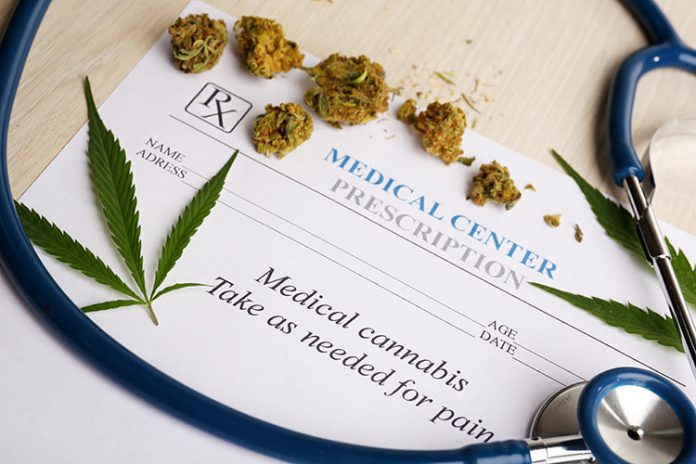A valid California State Medical Marijuana ID card is the gold standard for admittance into a medical club. But, a doctor’s recommendation is far more common and usually sufficient. But everyone is confused because it is confusing, especially since commercial recreational sales began on Jan. 1.
Most people used to get a doctor’s “recommendation” (not a prescription) to buy marijuana. These cards usually expired in one year and cost anywhere from $30 to $100. It often came on a sheet of paper with an embossed seal, as well as on a pocket-sized card. This “recommendation,” plus a driver’s license, was required to walk into a dispensary.
What almost no one had, or has, is the California Department of Public Health (CDPH) Medical Marijuana Identification Card. Only 6,172 people — in a state of 38 million — got the more formal state ID card in 2017. That’s because it isn’t mandatory, and it’s a total pain to get.
To get the state’s Medical Marijuana Identification Card, you need to:
1) Get a doctor’s recommendation,
2) Make an appointment with your county health office (because the state program is administered at the county level).
3) Turn in some forms and an application fee.
4) . . . Wait
Weeks or months later, you’ll get an official state medical cannabis ID card in the mail, which looks like a driver’s license and allows you to buy medical weed for cheaper than recreational customers.
California Department of Public Health Medical Marijuana Identification Cards are all the rage in 2018 because it can exempt you from paying sales tax at the register. In Alameda County, that’s a savings of 9.25 percent. It can be a meaningful amount, especially if you buy thousands of dollars’ worth of cannabis in a year.
Super law-abiding folks also prefer a California Department of Public Health Medical Marijuana Identification Card because it makes them feel like things are on the up and up. That was a bigger deal before voters legalized cannabis for all adults 21 and over in 2016. A state ID card bolsters the case that you’re a real medical cannabis patient, which may be useful during a traffic stop, a workplace drug-testing dispute, a divorce, a custody battle, or when trying to get into a nursing home, et cetera. You can learn more about getting a state ID card at the state’s health department website, CDPH.ca.gov.
Those with a doctor’s recommendation won’t save any money on taxes. But they, like those with a state ID, will have access to the hundreds of dispensaries and delivery services that are still “medical-only” in 2018. Those places are medical-only usually because they do not have a dual local and state license to conduct sales to all adults 21 and over.
Also, it should be made clear that medical and recreational customers can buy all the same products. Medical patients don’t get special or purer supplies, although they can buy stronger dosed edibles. (And some retail stores offer special discounts to medical patients.)
As for a dispensary that asks for your doctor’s note even if you have a state ID card — you’re experiencing a case of what I’m calling “over-compliance.” It’s when a pot shop goes above and beyond the rules, sometimes making things unnecessarily difficult. Cut them a little slack. This over-compliance is born out of the business’ lack of regulatory knowledge and fear of fines or losing their license. They’d rather be too careful. So they’re taking too much personal information, or they’re being super-strict about cell phone policies, or generally acting by-the-book all of a sudden.
The public can, should, and is pushing back on onerous over-compliance — often for the sake of convenience or consumer privacy. It’s going to take years for the dust to settle on standard operating procedures for cannabis retailers, the way we have for liquor stores — which, by the way, have notoriously lax rules by comparison. It’s weird: I can bring my kid into a liquor store while I buy enough vodka and aspirin to kill me that afternoon, but god forbid a child sells Girl Scout cookies near a highly secure weed store.
In the meantime, we just have to be patient and flexible, while encouraging operators to do better. (Or by shopping elsewhere.) It’s still way less of a pain than calling my old dealer.














